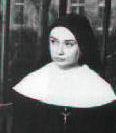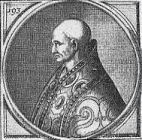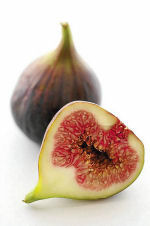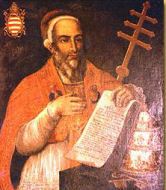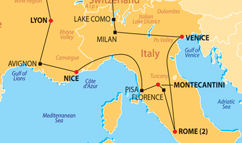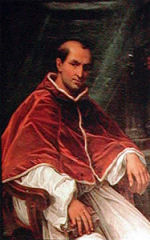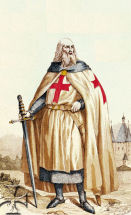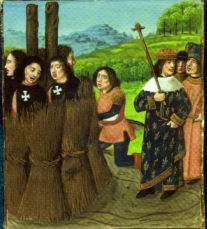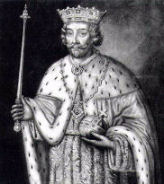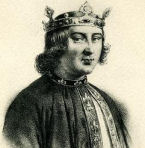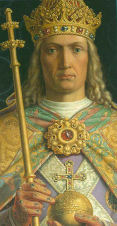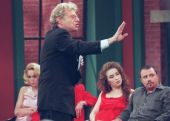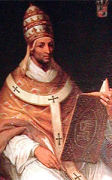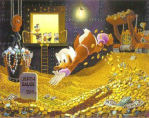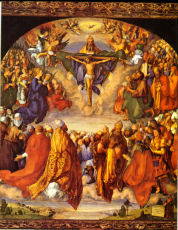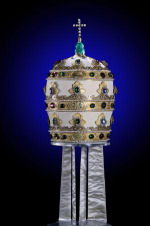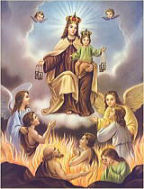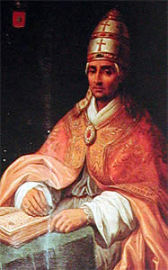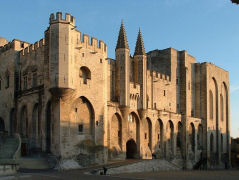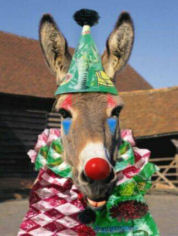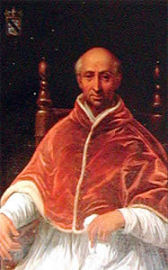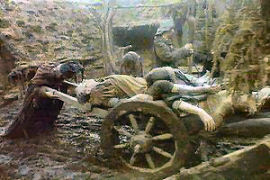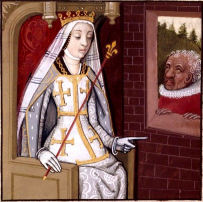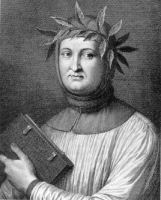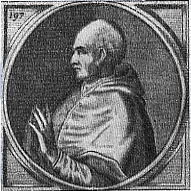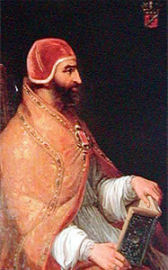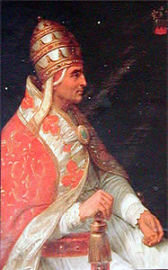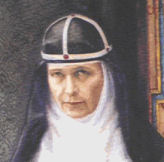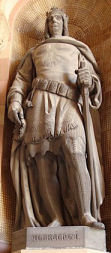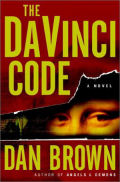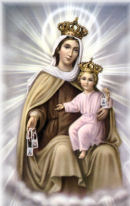Chapter 13: Les Papes
“Arrivederci, Roma”
Nicholas Boccasini, who had been elevated to the purple by Pope Boniface VIII and had stood beside him in the showdown at Anagni, was quickly chosen to succeed his patron as Pope Benedict XI. Although only pontiff for eight months, he managed to sprinkle a little oil on extremely turbulent waters. He excommunicated Nogaret and Sciarra Colonna, but he absolved the Colonna cardinals. He made peace with King Philip the Fair and refused to publish his excommunication. Pope Benedict reportedly died after eating some “freshly culled figs.”[1] Nogaret was suspected of poisoning him.The cardinals needed eleven months to choose a seasoned diplomat named Bertrand de Got, the Archbishop of Bordeaux, as the next pontiff. He had supported Pope Boniface, but he was also chummy with Boniface’s nemesis, King Philip. As a favor to the king he received the tiara in Lyons in 1305 as Pope Clement V. His pontificate started badly.
The feast was marred by a sad accident. An old wall which lined the way of the procession, fell under the weight of the numerous spectators with which it was laden, at the very moment the Pope was passing; Clement was not injured, but only thrown to the ground, and his crown, fallen from his head, rolled in the mire. Twelve persons within the compass of it were mortally wounded, and died a few days afterwards; among the number was the Duke of Brittany; the Duke of Valois was badly injured.[2] Asking Sr. Mary Immaculata how Pope Clement managed to escape unscathed from this catastrophic accident would have been foolish. His guardian angel obviously protected him. We prayed for help from our guardian angels every day, and we always made room for them next to us in the pews. Mine was very adept at warding off disease and broken bones, but he/she/it did not seem concerned if I smashed headlong into an immovable object when chasing a fly ball or dodging a beanbag. Venturing outside of Rome was not unusual for the popes. Often they simply considered the city too dangerous. Several pontiffs languished for years in exile; Pope Vigilius was in more or less voluntary exile near Constantinople for nearly a decade. A few popes never took up Roman residence at all. Pope Celestine V, for example, spent his entire papacy in Naples. This, however, was new: Pope Clement’s crimson slippers never once touched Italian soil, and he started a trend.
How could the man elected Bishop of Rome – the pope’s oldest title – make no effort to visit his own diocese? Well, in the fourteenth century they did not make bishops the way that they used to. Originally bishops were chosen from the local clergy as managers of the diocese. They might sojourn abroad for the occasional council, but otherwise they were expected to keep the home fires burning. For centuries canon law even prohibited bishops from changing dioceses. Formosus faced excommunication on the mere suspicion of plotting to leave his diocese of Porto for an appointment in Bulgaria. Over the centuries, however, politics overtook this parochial notion. Bishoprics were often awarded on the same basis as other fiefs. Bishops functioned as ambassadors for Church and state alike. By the 1300’s nobody expected to encounter the bishop at the vegetable market on Saturday – or the cathedral on Sunday.
For four years Pope Clement amassed HiltonHHonors points at Embassy Suites hotels throughout southern France. He set up temporary headquarters in Lyons, Cluny, Bordeaux, Toulouse, and Nîmes. Unlike the eleventh century exiles, he never stooped to begging. Instead, he supplemented the stream of income from the Papal States with extortion, sale of benefices, and seizure of property from convicted heretics. In 1309 the pontiff settled in the lovely town of Avignon, which was surrounded by France, but not subject to King Philip. Avignon already had a bishop, so the pontiff bunked in his palace. The members of the Curia fended for themselves.Clement reportedly battled cancer for much of his pontificate. Perhaps the malady contributed to his tendency to try to placate all sides. He implemented most of King Philip’s agenda.[3] He diplomatically canonized Pope Celestine V as “St. Peter” rather than “St. Celestine,” and he called him a confessor rather than a pope. Nevertheless, his action meant that Pope Boniface VIII had imprisoned a saint. King Philip sought to put Boniface on trial for Celestine’s imprisonment and possible murder, but Pope Clement dodged the issue by assigning it to a council in Vienna, outside of Philip’s jurisdiction.
Pope Clement lifted the ban on tournaments (jousting, etc.). He also declared it heresy to claim that usury, by which he clearly meant charging any interest on loans, was acceptable.
The Templars
The Knights Templar were a religious order of (predominantly French) knight-clerics organized to fight in the Holy Land. The crusades had left them extremely wealthy and powerful. The familiar figures with the bold red crosses on their white tunics specialized in battling Muslims and banking, a rather unusual vocation for monks who had taken vows of poverty, made more extraordinary by the Church’s ruling that lending money at interest (usury) was sinful. The Templars sidestepped canon law by writing their loan agreements very carefully. King Philip the Fair himself sought to borrow money from the order. The knight overseeing credit checks that day must have had his helmet on backwards; his rejection of the king’s loan application was a catastrophic mistake.
In 1291 the last Christian stronghold in the Middle East, Acre, fell to the Muslims. Many Templars returned to Europe. Pope Clement V used a letter trumpeting an upcoming crusade to trick Jacques de Molay, the Grandmaster of the Templars, into returning to France. On October 13, 1307, King Philip ordered the arrest of all Templars in France, including de Molay. Pope Clement extended the warrant to all Christendom. The knights were accused of heresy and remanded to the Inquisition. The pope also authorized the seizure of the knights’ property. Convicted criminals who informed against the Templars received pardons and other rewards for their testimony. Under torture the grandmaster admitted to “denying Christ and trampling on the cross” as part of an initiation ceremony. Other Templars were convicted of similarly inexcusable actions. The Archbishop of Sens ordered fifty-four Templars burned at the stake on May 12, 1310.Pope Clement’s bull, “Vox in Excelso,” typified his approach to problems. It disbanded the Knights Templar[4] even while carefully noting that they were probably not guilty as charged. The pope forbade anyone except the Church from seizing Templar territory, and he disavowed the burning of the fifty-four knights. He ordered that the Templar’s property be turned over to the Hospitallers, a rival order. Despite these decrees, almost all Templar land was confiscated by the king, and most valuables ended up in Pope Clement’s strongbox. Eventually King Philip ordered both de Molay and Geoffrey de Charnay burned at the stake. They were executed on March 8, 1314. Their primary crime was insolence.
No Stop, No Crop; No Pope, No Hope
Pope Clement’s illnesses felled him on April 20, 1314, not a bad time to abandon this mortal coil. Things quickly turned ugly. Europe had enjoyed a population boom in the late thirteenth and early fourteenth centuries. However, the spring of 1315 brought heavy rains that continued throughout the summer. The harvest was ruined; much of the continent faced starvation; a crust of bread was literally a feast for a king. On August 10, 1315, King Edward II of England stopped in the town of St. Albans, and the residents could not scrape up even one loaf of bread for the royal contingent. The weather was equally bad in 1316; 1317 was even worse. The food supply did not stabilize until 1325. Meanwhile, the cardinals, who, despite the famine, were strong favorites not to miss any meals during the conclave, seemed hopelessly divided about Pope Clement V’s successor. For two years and three months they bickered. At one point they gave up and went home! In 1316 King Philip V herded twenty-three of them back into conclave in Lyons. When the deadlock presisted, he forced them to do without food.The cardinals submitted courageously to the frugal diet of bread and water, … the severity towards them was increased, by diminishing daily their rations of bread and water. At last, after a forced fast of forty days, they determined to commission the cardinal Jacques d’Euse (James d’Ossa) to choose the worthiest among them as sovereign pontiff. The proud prelate placed the tiara on his own head and proclaimed himself pope, by the name of John the Twenty-second.[5]
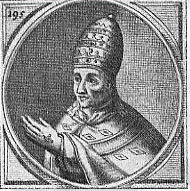
Pope John XXII was the legendary master of the coin trick. His specialty was the “papal reservation,” which “reserves” certain appointments to the pope. “Immediately after his election he reserved all benefices whose previous holders had received another position from the pope, and a year later, by declaring that no one might hold more than two benefices, he created a large number of other vacancies, which he likewise reserved to himself. In 1322 he reserved all the benefices in the patriarchate of Aquileia and the archbishoprics of Ravenna, Milan, and Genoa. The same purpose was served by the foundation of a large number of new dioceses by division of the older ones.”[9]
Just as a conjuror’s most impressive effects often combine two or more sleights, the reservation trick only realized its full potential when used with two companion tricks, “free will offerings” and “annates.” A “free will offering” was a cash payment for an appointment or papal favor. In theory it represented an amount minimally sufficient to cover administrative costs. Pope John’s notion of free will offering was this: “I will freely make the appointment after I check the size of your offering.” “Annates” were the revenues generated in the first year of appointments, which, for pontifical ones, went to the pope. John XXII was also the first pope to make widespread use of the collagium, a fee imposed on supposedly celibate clerics for the privilege of maintaining concubines. His proficiency at dunning his troops in the fields of the Lord was unequaled. On one wrathful day he excommunicated five archbishops, thirty bishops, and forty-six abbots who were slow in remitting their collections to Avignon. For dessert he dropped the X-bomb on a patriarch deemed guilty of the same offense.While Europe starved, a phenomenal amount of money found its way to Pope John’s vault. He enriched himself and his family to an extent never before witnessed. His obsession with amassing wealth is matched in literature only by $crooge McDuck’s. Peter De Rosa asserted that at his death Pope John XXII was the richest man in the world, possessing so much gold that many alchemists were convinced that he had found the Philosopher’s Stone.[10]
Salvation According to John XXII
On November 1, 1331, Pope John committed une gaffe extraordinaire. His sermon declared that the saints would not achieve “beatific vision” until the Last Judgment. Although consistent with scripture and the official canon, this statement undercut the longstanding practice of urging the faithful to pray to the saints. If saints enjoyed no special access to the Divine Presence, why pray to them? The pope’s idea also indirectly subverted the concept of purgatory, the traditional basis for indulgences. The Church had become addicted to using indulgences to motivate the faithful to do its bidding.This sermon was probably the most stunning papal faux pas since the “one Will” blunder of Pope Honorius I. In 1334 the Italian cardinals requested a general council to settle the matter, but Pope John died before it commenced. Since no respectable theologian would argue the pontiff’s case, his death ended the controversy, at least temporarily. The Church avers that Pope John XXII conveniently retracted his position on beatific vision shortly before his death. A papal bull over his name was posthumously published. Does it really matter whether he recanted his heresy before anyone could declare him a heretic? Are popes allowed to “misspeak” in these matters? I suspect that Sr. Mary Immaculata would argue that Pope John’s deathbed conversion was the inspirational intervention of the Holy Spirit. She might also have admonished us that it was not our place to speculate about the Lord’s ways. Our job was to glorify His Name by memorizing the catechism.
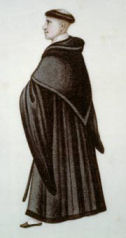
Pope John XXII, who had raised the amassing of material goods to an art form,[11] vehemently disagreed. His bull, “Quorundam Exigit,” favored the other Franciscan sect, the “Conventuals,” who endorsed a more lenient interpretation of the rules. He ordered the Spirituals to submit to this judgment. Their reply argued that since each pope was infallible, no genuine pope could make rulings contrary to those of a previous infallible pope. Therefore, when Pope John XXII contradicted the infallible Pope Clement V, he was ipso facto no longer pope, and his bull was void!
Rather than refuting these ideas, Pope John XXII responded with a counterattack entitled “Quia quorundam.” His fixation on the obscure concept of the “Spiritual Key,” given by Jesus to Peter, makes it difficult reading. It declared that anyone making the Spirituals’ argument was mouthing the heretical words of the “Father of Lies.” He was deadly serious. Sixty-four Spirituals were summoned to Avignon. Some were remanded to the Inquisition. Four recalcitrant monks were eventually burned at the stake in Marseilles.
Pope John added the third crown to the pope’s tiara. The three crowns are said by some to represent the pope’s dominion over the earth, heaven, and hell. How he planned to overthrow hell’s longtime sovereign is anyone’s guess. Sr. Mary Immaculata never mentioned the pope’s gaudy tiara, which was still worn in our day, but was mothballed shortly thereafter.Perhaps the most bizarre and lasting legacy of this pontificate is the brown scapular, a cloth contraption worn around the neck. According to the papal bull, “Sacratissimo Uti Culmine” attributed to Pope John XXII,[12] Our Lady of Mount Carmel revealed in a vision to the Holy Father that every Saturday morning – well before the Notre Dame football game starts – the Virgin Mary herself descends to purgatory and escorts to the “holy mountain of life everlasting” everyone there who died wearing a scapular. Interested parties can easily find a brown scapular on eBay. Some go for less than $5, but the buyer must pay the shipping charge.
Pope Jackass I
It evidently took thirteen centuries to produce the first pope with a self-deprecating sense of humor. When Jacques Fournier[13] learned in 1334 that after only seven days of debate a contentious conclave had chosen him to succeed John XXII, he reportedly replied, “You have elected a jackass!” He nevertheless hee-hawed his acceptance and named himself Benedict XII.Benedict inherited a dicey situation from $crooge McPope, but he made peace with the emperor and, to an extent, the Franciscans. Benedict was himself a Cistercian monk, and as pope he continued to wear the habit. Cistercians take a vow of poverty; Benedict soon reversed the most avaricious of Pope John’s policies. “Chainsaw Benny” single-handedly reduced papal expenses by 75 percent. He eschewed nepotism; maybe he had a low opinion of his siblings or their offspring. Pope Benedict was a pacifist; he postponed but could not prevent the Hundred Years War between France and England. He succeeded in reforming the monastic orders a little. He contradicted Pope John’s publicly stated position on beatific vision and issued a bull declaring “immediate intuitive vision of God” an article of faith.
Pope Benedict seriously considered moving the papacy back to Rome. He directed considerable resources to the restoration of the Lateran and St. Peter’s. In the end, however, the cardinals convinced him to stay in Avignon. He even ordered the construction of the first buildings that became the ornate and extremely well-fortified papal palace.
Benedict XII reigned from 1334-1342. By the end of his pontificate the Church was more or less back to its state before Pope John XXII’s machinations, a pretty impressive effect even if it took him eight years to produce it.
Pope Jackass II
The fourth pope of the “Babylonian Captivity” was Clement VI. He once admitted that if the King of England asked him to appoint a jackass as Archbishop of Canterbury, he dared not refuse. At a banquet in Avignon in 1349, the pope’s nephew (who was also a cardinal) seated a clown on the back of a jackass and told him to ride up to the pope and humbly ask to be named Archbishop of Canterbury. Maybe you had to be there. Clement claimed that no previous pontiff had behaved suitably. He soon began disposing of the surplus amassed by his frugal predecessor. To support the artistic community he reinstated many of Pope John XXII’s money-raising tactics. In some cases he even resorted to undisguised simony.Pope Clement faced a threat more deadly than the Spirituals, the kings, the emperor, or even the Saracens – oriental rat fleas infected with the bacterium Yersinia pestis and the black rats that brought them aboard ships. In the winter of 1347 the Black Death swept through Sicily, Sardinia, Corsica, and southern France, including Avignon. The victims developed distinctive buboes as their lymph systems struggled to isolate the invasive bacteria. Soon internal bleeding produced large black bruises on their skin. They often perished within a day or two of the onset of symptoms. The Pied Piper or the Orkin Man might have been useful, but the Church was helpless. Pope Clement’s physician was stricken, but he recovered after being incapacitated for six weeks. The pontiff holed up in his castle surrounded by raging fires. His isolation saved him from the outbreak.[14] Many were not so fortunate; nine cardinals were among the seventeen thousand victims in Avignon. The bubonic plague spread to the rest of Europe over the next few years. Many Christians blamed the Jews for it. Although the pope insisted on their innocence, pogroms spread. Pope Clement recognized the plague’s potential as a profit center; he granted indulgences to victims who bequeathed their worldly goods to the Church.
In 1350 Pope Clement declared the second Holy Year of Jubilee. Again pilgrims flocked to pope-free Rome to obtain the papal indulgence. Fr. Martin described the bizarre event thus, “Fifty thousand pilgrims a day arrived to pray at the tomb of St. Peter only to find cows pasturing on the grass in the main apse, dog droppings in the crypt, and all over Rome the filth and detritus of an anarchic population.”[15]“Unigenitum,” the bull that declared 1350 a Holy Year of Jubilee, delineated the qualities of the Treasury of Grace, the basis for the pope’s ability to issue indulgences. It reasoned that the pope could establish conditions for granting indulgences, including publishing a rate card. The pope chose not to do so – yet. He did, however, make it possible for the gentility to gain indulgences even if their busy schedules could not accommodate a pilgrimage. Dispensations were offered for sale to those who could afford them.
Pope Clement remained in Avignon. Unless he sold himself a dispensation, he did not earn the indulgence. Two years earlier he had cemented the relationship between the papacy and its new home on the Rhone by purchasing the entire town from Queen Joanna I of Naples. Even if the plague had engendered a bear market in real estate, the price negotiated by the Holy Father was well below the going rate for such a beautiful and prosperous place. A cynic might notice that the pope also absolved Her Highness of the charge of murdering her husband (who was also her cousin).[16] Hubby’s death conveniently allowed her to marry a different cousin. Pope Clement acquired quite a reputation as a womanizer. Even though he generously funded Petrarch’s career, the poet referred to him in a private letter as an “ecclesiastical Dionysius … soiled with incestuous embraces.” The pope’s long non-incestuous affair with the Countess of Tourenne was common knowledge. Louis the Bavarian, the emperor who had attempted to depose Pope John XXII, was not Pope Clement’s favorite person. The pope petitioned God to strike Louis with lightning so as to render him blind and insane (twice) and prayed for Sts. Peter and Paul to punish him in this world and the next. His Holiness called upon the earth to swallow the monarch alive. That prayer went unanswered.“Unigenitum” declared that the pope alone had the ability to declare sainthood. The explanation was that when the pope declared someone a saint, he used his keys to unlock the gates of heaven. If the subject were not already there, the pope’s affirmation gave him/her the boost needed to reach paradise. Consequently a saint is never de-canonized. The worst-case scenario is for one to lose her/his feast day and be removed from the list. Fortunately Clement never dared to canonize himself. Even Sr. Mary Immaculata would be hard-pressed to explain that one.
“Yes. Well, No.”
In 1352 the cardinals assembled in conclave to determine Pope Clement’s successor played a clever trick on the next pope. They all swore the Musketeers’ oath: “Un pour tous, tous pour un.” The new pontiff would share his power and income equally with the other cardinals. They then elected Cardinal Etienne Aubert, as Pope Innocent VI, who immediately nullified the “capitulations.” When Aubert had sworn his agreement to the limitations on papal authority, he had slipped his right hand in the copious left sleeve of his vestments and his left hand crossed into the right sleeve. He later revealed that he had in fact had his fingers crossed![17] This sort of “pre-nuptial agreement” between the popes and the cardinals has repeatedly been tried throughout the history of the papacy, and it has almost never worked. Once the tiara settles on the new pope’s noggin, the cardinals are powerless. When Pope Innocent expired after a decade-long pontificate, the cardinals voted in the brother of Pope Clement VI, Hugues Roger, Cardinal of Tulle, but he declined. Guillaume de Grimoard, who was not a cardinal, was then chosen as Pope Urban V. During the early years of his reign Europe suffered through another widespread outbreak of the bubonic plague.On September 14, 1366, Pope Urban announced the papacy’s return to Rome, but it was not that easy. Decades of abusive absence had fostered resentment among all inhabitants of the Papal States, especially the Romans. In short, the pope would need to fight and bribe his way back into Rome. Pope Urban resolved to do it. It was over a year before the pontiff finally entered Rome on October 16, 1367. There he discovered the Lateran Palace burnt down and most of the Vatican essentially uninhabitable. He devoted a great deal of time, effort, and money to restoring the ancient papal buildings. This devotion irked the French cardinals, who had other plans for Church funds.
The plague broke out again in 1369 and raged for two years. Meanwhile, the security situation around Rome deteriorated. Moreover, France and England seemed on the verge of another war. In 1370 Pope Urban, despite St. Bridget’s urgent pleas and dire predictions, threw a coin in Trevi Fountain – or rather at the terminus of a broken aqueduct where the fountain would be built 259 years later – and promised to check in with Rome every day on his BlackBerry. He then abandoned his tumultuous diocese and returned to Avignon by way of Viterbo and Montefiascone. Unfortunately, he died only two months after reaching southern France.
* * *
S’ter might have been right when she taught us that the Holy Ghost had decided that the pope should be Italian. Historians agree that most French pontiffs rank among the least holy of the Holy Fathers. Although many have used the metaphor, “The Babylonian Captivity,” for this period, Avignon had no analog to King Nebuchadnezzar; nobody forced the popes to stay.
[1] Cormenin, op. cit., Vol.2, p. 39.
[2] Don Louis Tosti, History of Pope Boniface VIII and His Times with Notes and Documentary Evidence, translated from the Italian by Rt. Rev. Mgr. Eugene J. Donnelly, V.F., Christian Press Association, 1911, p. 409.
[3] Cormenin claimed that before his election Clement had sworn to implement all of King Philip’s demands plus one undisclosed favor, later revealed as the appointment of Philip’s brother as King of Germany after Albert I’s death. Cormenin asserted that the pope deliberately sped up the election of Albert’s successor to provide an excuse for not interfering. Many historians have concluded that Clement remained stationed in Philip’s pocket, but Cormenin and contemporary historians insisted that the pontiff often tricked the monarch.
[4] Therefore, on top of everything else, Pope Clement must share responsibility for The Da Vinci Code.
[5] Cormenin, op. cit., Vol. II, p. 45.
[6] Ulick Ralph Burke, M.A., A History of Spain, Longmans, Greens, and Co., 1900, Vol. II, p. 140.
[7] Joseph Epiphane Darras, Martin John Spalding, Charles Ignatius White, A General History of the Catholic Church, P. J. Kennedy, 1898, Vol. III, p. 486.
[8] Cormenin, op. cit., Vol. II, p. 52.
[9] Philip Schaff, The New Schaff-Herzog Encyclopedia of Religious Knowledge, Vol. VI, p. 201-202.
[10] Charles Mackay, Extraordinary Popular Delusions and the Madness of Crowds, Wordsworth Editions, 1905, p. 120.
[11] Cormenin claimed that the real issue was that the Spirituals were not making payments to the pope.
[12] The bull’s authenticity and especially its attribution to John XXII are dubious. Most scholars place it in the fifteenth century in Agrigento, Sicily. Why it was attributed to the pope who asserted that not even the saints were in heaven is puzzling. Nevertheless, the Carmelites pressured subsequent popes into ratifying some of its contents. The Church has discouraged the citing of the miraculous appearance of our Lady of Mount Carmel and the “Sabbatine Privilege,” but Carmelites still promote them.
[13] Fournier was officially the son of a cook, but Cormenin wrote that his real father was probably Pope John XXII. If so, the apple sure fell a long way from the tree. No pair of adjacent popes had less in common.
[14] Louis N. Magner, A History of Medicine, CRC Press, 1992, p. 120.
[15] Malachi Martin, The Decline and Fall of the Roman Church, G.P. Putnam’s Sons, 1981, p. 178.
[16] Joanna was older than her husband, Andrew, when she wed at the age of seven. When they grew up, he developed designs on her kingdom, a fatal flaw in his character. He dodged a staged hunting accident thanks to a warning from still another cousin. A little later, while the queen was asleep, he was called from his chamber, assaulted, and hung with a cord.
[17] This fanciful explanation is superfluous. According to the Church, Cardinal Aubert’s consent had been contingent upon the legality of the agreement. At the instant of his election he realized that it had been illegal.
 | |
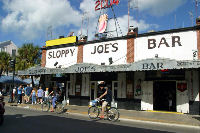 | |
Bankable Bar Bets
$ Pope Clement V was elevated to the papacy in Lyons, France. In his nine-year pontificate he never attempted to go to Rome and never set foot in Italy.
$ Pope Clement V’s brother and several nobles were killed by a collapsing wall during the papal investiture procession. The pope fell off of his horse and lost a diamond from his tiara.
$ It rained so much during the summers of 1315, 1316, and 1317 that the crops throughout Europe failed. During most of this time there was no pope.
$ In 1316 the cardinals appointed Jacques d’Euse as a committee of one to find the best man to become the new pope. He selected Jacques d’Euse.
$ Pope John XXII ordered the Bishop of Cahors to be flayed alive and burned at the stake.
$ Pope John XXII preached that heaven was devoid of saints.
$ Pope John XXII amassed an incredible amount of wealth. One chronicler has claimed that at his death he was the richest man in the world.
$ Nine cardinals in Avignon were felled by the first outbreak of the bubonic plague.
$ Pope Clement VI profited from the plague by offering indulgences to victims who bequeathed their property to the Church.
$ Pope Clement VI enjoyed a long well-known affair with the Countess of Tourenne.
$ After Pope Innocent VI died, Pope Clement VI’s brother was elected pope, but he declined the honor. The list of people who have refused the papacy is very short.
$ Pope Urban V fought his way into Rome, but he finally gave up and returned to Avignon.
